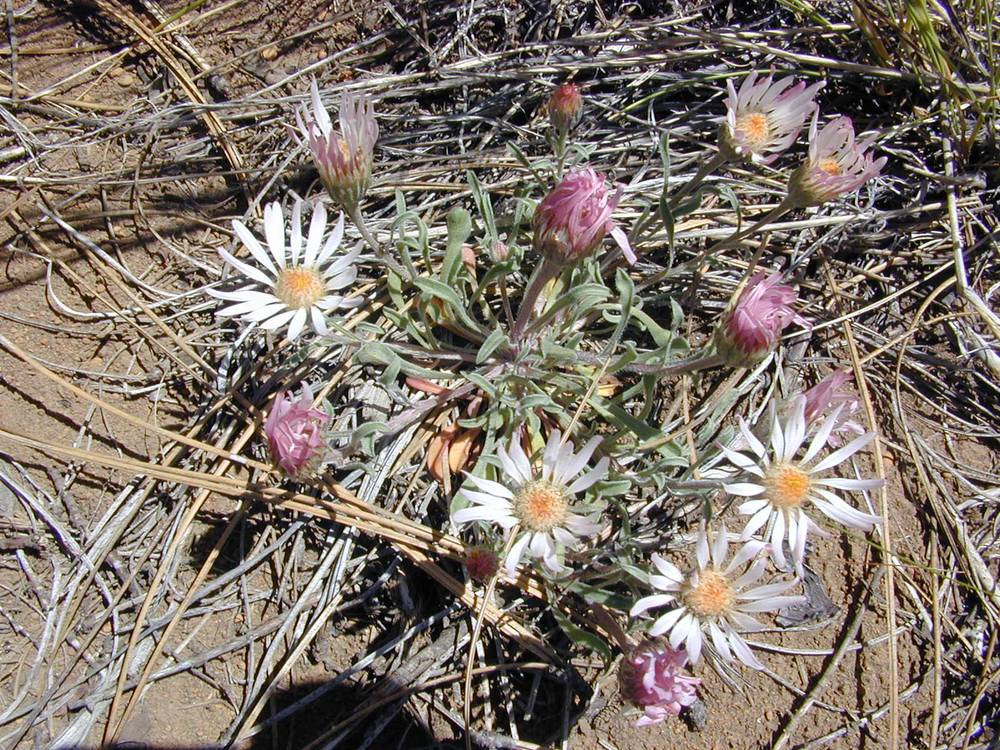Townsendia eximia
Townsendia
townsendia
1–numerous, decumbent to erect, strigose to hispid.
basal and cauline, linear to spatulate;
surfaces glabrous to glabrate or strigose, usually petiolate.
heads solitary; terminal or on scapiform peduncles.
hemispheric or campanulate.
flat or convex;
paleae 0.
pistillate;
rays narrowly oblanceolate or oblong, white to pink or purple.
bisexual;
corollas cylindric, usually slightly enlarged distally, yellow;
lobes 5, triangular; erect;
stamens included or partially exserted.
in 3–7 series; erect to spreading, narrowly lanceolate to lance-ovate;
margins narrowly membranous;
surfaces glabrous to strigose; inner equal; outer gradually shorter.
obovate or oblanceolate, compressed, glabrous to pubescent, pappi of lanceolate or narrow, tapering; bristle-like scales.
radiate.
Townsendia eximia
Townsendia
Western North America. 26–27 species; 4 species treated in Flora.
Stephen Meyers


